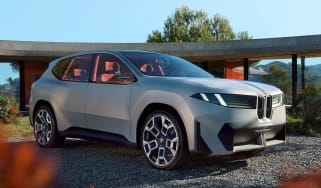Driverless cars are go at BMW
Google's driverless prototype has been given the go-ahead, but BMW boss says autonomous driving technology already exists

Google can put away its experimental car, claims BMW, because driverless vehicles are already here. According to the outgoing director of development at BMW, Dr Klaus Draeger, self-driving technology has
been around for years.
“In some situations that are favourable, a car can drive itself today. There’s no technological problem with that,” said Draeger, the new head of supply and purchasing at BMW.
He insisted that a combination of computer-controlled brake and accelerator pedals, plus electro-mechanical power-steering, lane-departure cameras and radar cruise control, meant the core tasks of autonomous driving were already taken care of.
“Drive a premium car on the motorway, with lane-departure warning and active cruise control switched on, and it’s more or less autonomous anyway,” he said.
And BMW has more experience of self-driving cars than most. It has run semi-autonomous Track Trainer 330i models since 2007. They use cameras and a super-accurate sat-nav to help with driver training and can run at 95 per cent race pace on any given track with no driver input.
Google’s robot cars get go-ahead from Nevada
BMW says it got there first, but Google continues to develop its driverless cars. The state of Nevada has now granted it a licence to operate its Toyota Prius prototypes on public roads. But at least two people have to be in the cars at all times to take control if things go wrong.
To distinguish it from other cars, the self-driving Prius has to wear a red number plate with an infiniti symbol, which will be switched for a green version if and when driverless cars become fully legal. Bruce Breslow of the Nevada Department of Motor Vehicles said autonomous cars could become a reality within three to five years.
Find a car with the experts






